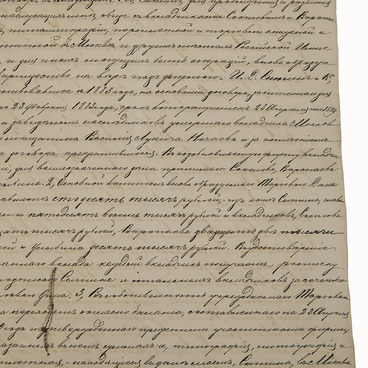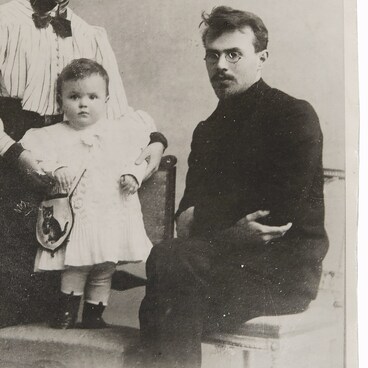In 1924, on the instructions of the People’s Commissariat of Industry, Ivan Dmitrievich Sytin traveled with a group of cultural figures to the United States to organize an exhibition and sale of paintings by Russian artists. The idea of the exhibition belonged to Ivan Ivanovich Troyanovsky, a successful natural scientist, popularizer of science, and author of textbooks, who actively collaborated with Sytin’s publishing house. The need to help artists experiencing serious financial difficulties, as the need to promote the art of a new country, was rather obvious. Troyanovsky managed to captivate Ivan Sytin with this idea, including its financial side. Sytin lent 7,000 rubles for the arrangement of the exhibition, and Troyanovsky — 6,000.
Sergei Vinogradov, the head of the Union of Russian Artists, played an active role in the organization. An interesting document has been preserved — an invitation to future participants, artists and sculptors. It describes in detail both the goals of the planned event and the main requirements for exhibitors. It says, in particular, that, on the one hand, the exhibition should “familiarize the American society with Russian art, and on the other — sell the works most profitably and thereby provide artists with money for a more or less long time and give them the opportunity to work comfortably in the future.”
The artist Sergei Arsenievich Vinogradov was announced as the chairman of the exhibition committee. The exhibition was very diverse: it presented architectural projects by Alexey Shchusev, sculptural works by Sergei Konenkov and Anna Golubkina, objects of decorative and applied arts, graphic works made in various techniques, paintings by Abram Arkhipov, Apollinary and Viktor Vasnetsov, Igor Grabar, Boris Grigoriev, Stanislav Zhukovsky, Vasily Polenov, Nicholas Roerich, Zinaida Serebriakova, Konstantin Yuon and other Russian artists.
The exhibition opening took
place in New York on March 8, 1924. It was open until April 20. Of the
organizers of the exhibition, only three returned to Moscow — Sytin,
Troyanovsky and Grabar. The results were contradictory. The overall success,
press attention and public interest did not hide the obvious shortcomings of
the organization. 93 exhibits were sold (approximately 10% of the exhibited artifacts).
It was seen by 18,000 visitors, of which 10,000 paid for their tickets. At that
time, they wrote about its moral success.


